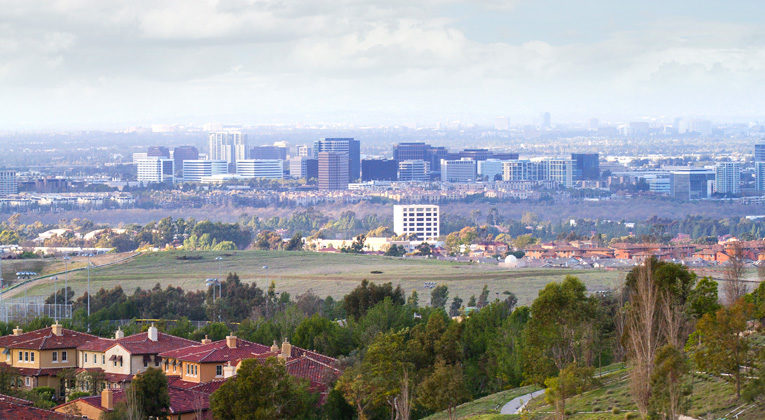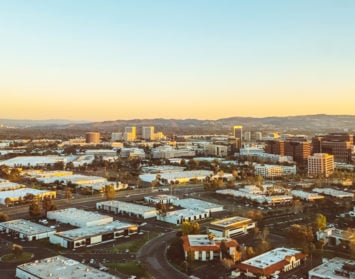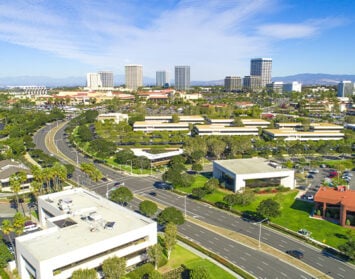By Alex Musetti
Anyone reading this understands that 2020 was one of the most volatile and difficult years in our lifetime. With that, the commercial real estate market and industry has become one of the most affected industries by the COVID-19 pandemic. However, 2020 did not affect all commercial real estate categories in the same way. The industrial sector of the economy has remained strong and vibrant, as have e-commerce-based companies. This has created unprecedented demand for industrial and manufacturing space around the country, and many categories of industrial space, particularly distribution space, have actually seen vacancy rates decline and rental rates increase. Similarly, the biotech industry set records for capital formation during the pandemic, creating unforeseen and unprecedented demand in all of the major biotech markets across the country, where we currently see not only supply shortages, but upward pressure on rents in every market from Boston, to Orange County, to the San Francisco Bay Area and Seattle.
This is where the decoupling begins. While things are strong in both the industrial and biotech wet lab categories, the retail and office sectors of the commercial real estate market are being decimated in real time. While everyone knows firsthand about the carnage in the retail industry, both the losses of over 110,000 restaurants (17% of the total restaurants pre-COVID) and hundreds of thousands of other small businesses that have been affected, retail space has flooded the market and is particularly softest in dense urban areas where tourists and the business community no longer come into those areas for the purchasing of goods and services. The commercial office sector has also had its challenges. Not only has there been a flood of sublease inventory hitting the market in most metropolitan areas, creating overnight competition with landlords at discounts from 20% to 30% below what the same landlord is willing to lease space at, but some tenants with leases expiring since the COVID-19 outbreak have not renewed their leases and simply relinquished their space, working remotely until the second half of this year when the pandemic is hopefully behind us. This phenomena of both the increase of sublease space and tenants giving up their space has caused office availability rates to hockey stick upwards. While some in our industry hypothesize that this will turn the other way later this year and course correct, we’re not so sure. In most markets during the Financial Crisis, it took three full years for rents to fall to their trough. Of course, there will be pockets that remain relatively stable, but we believe most markets will not recover for many years.
COVID-19 has resulted in millions of white-collar jobs being lost. In addition, the pandemic has caused companies to rethink about employees’ need to be in the office, and businesses of all sizes are currently exploring what their work from home policy is going to be post-COVID. Some companies we are talking to are embracing the work from home model, and offering employees based on seniority, personal style and the work being performed, the option to work from home part time or full time in the future. Depending on the company and industry, anywhere from 10% to 30% of employees will work remotely full-time or part-time post-COVID in the majority of companies surveyed. The result of this is that employers are going to need a lot less office space when they do come back to the office.
What this does inevitably mean…and it’s already begun…is the downsizing of corporate America as each tenant has the opportunity to confront their lease expiration date. As most of corporate America downsizes and determines if they only need between 60% and 80% of their pre-COVID footprint, companies will generally be moving to appropriately smaller sized spaces. The collective result of tenants downsizing one at a time is what we call “negative net absorption,“ whereby space floods the market on a net basis. Across-the-board, as commercial real estate tenants downsize their space requirements due to having less people, or having less people in the office, millions of square feet of office space will be coming back to the market each year on a net basis, causing availability rates to continue upward for the next 2 to 3 years as tenants leases expire. As of this date, the twelve-month negative net absorption for Orange County office space is 3,400,000 square feet. Although some submarkets have fared better than others, the trend is clear. The Irvine Spectrum submarket, usually considered The Irvine Company’s stable and robust backyard submarket, has seen availability rates increase from 15% one year ago to 19% today–a 27% increase. The Irvine/Tustin Legacy submarkets (also known as the Airport Submarket) have seen sublease inventory increase from roughly 500,000 square feet to 1,250,000 square feet, and have seen availability rates jump from 15% one year ago to 21% today, a whopping 43% increase. Even the Newport Beach submarket, which includes the coveted offices in Fashion Island, has seen an increase in availability rates from 11.2% one year ago to 14.5% today–a 29% increase.
Given these strong trends, 2020 may prove to be a warm-up of things to come for the commercial real estate office sector. It would be reasonable to assume that by the end of 2021 that these increases in availability rates will result in availability rates in all suburban markets ranging from 20% to 30%. Tragically, what’s lining up for the office market isn’t something that we’ve ever seen before. It’s not like the Tech Wreck of 2000 or the Mortgage Crisis of 2008. This real estate depression is probably going to look something more like the early 1990’s where the soft office market was driven by speculative over development, flooding the market with oversupply. This all happened at the same time that a recession occurred, causing availability rates to soar. That is certainly more similar to what we are likely to experience this time, whereby the office market took four years in the early 1990s to find the bottom, we could be very well into year two of a three to four year long macro-economic office market slide. Once we hit bottom, the bottom is likely to persist for a number of years before some kind of economic adjustment causes an increase in employment for office space demand to increase. For those in our industry that are saying it will never happen, the fact is that it has happened for different reasons, and we lived through it.
What that means for tenants is the strongest tenant market in over two decades. Free rent is already going up. Tenant improvement allowances are also going up and we are starting to see landlords offer relocation allowances for tenants to move into their building versus others. We are seeing floods of available choices in all size ranges, particularly those below 10,000 SF. For example, if you are an office tenant needing 3,000 to 5,000 SF in Irvine, today you have a total of 344 different spaces to choose from. Only when you get above 40,000 SF of contiguous office space do you begin to see something that feels like tightness in the market, or a pre-COVID version of reality. But even with that, there just aren’t many tenants in the market for that size of space, so even demand by multi-floor bigger companies is tepid at best.
The only silver lining on this is that as companies continue to fight to recover, to maintain jobs and profitability, and to lean down expenses, the commercial real estate office market is going to offer opportunities that most of us have not seen in our careers, or in recent memory.
Marketing statistics provided by CoStar Group.
Alex Musetti is a senior vice president of Hughes Marino, a global corporate real estate advisory firm that exclusively represents tenants and buyers. Contact Alex at 1-844-662-6635 or alex@hughesmarino.com to learn more.











